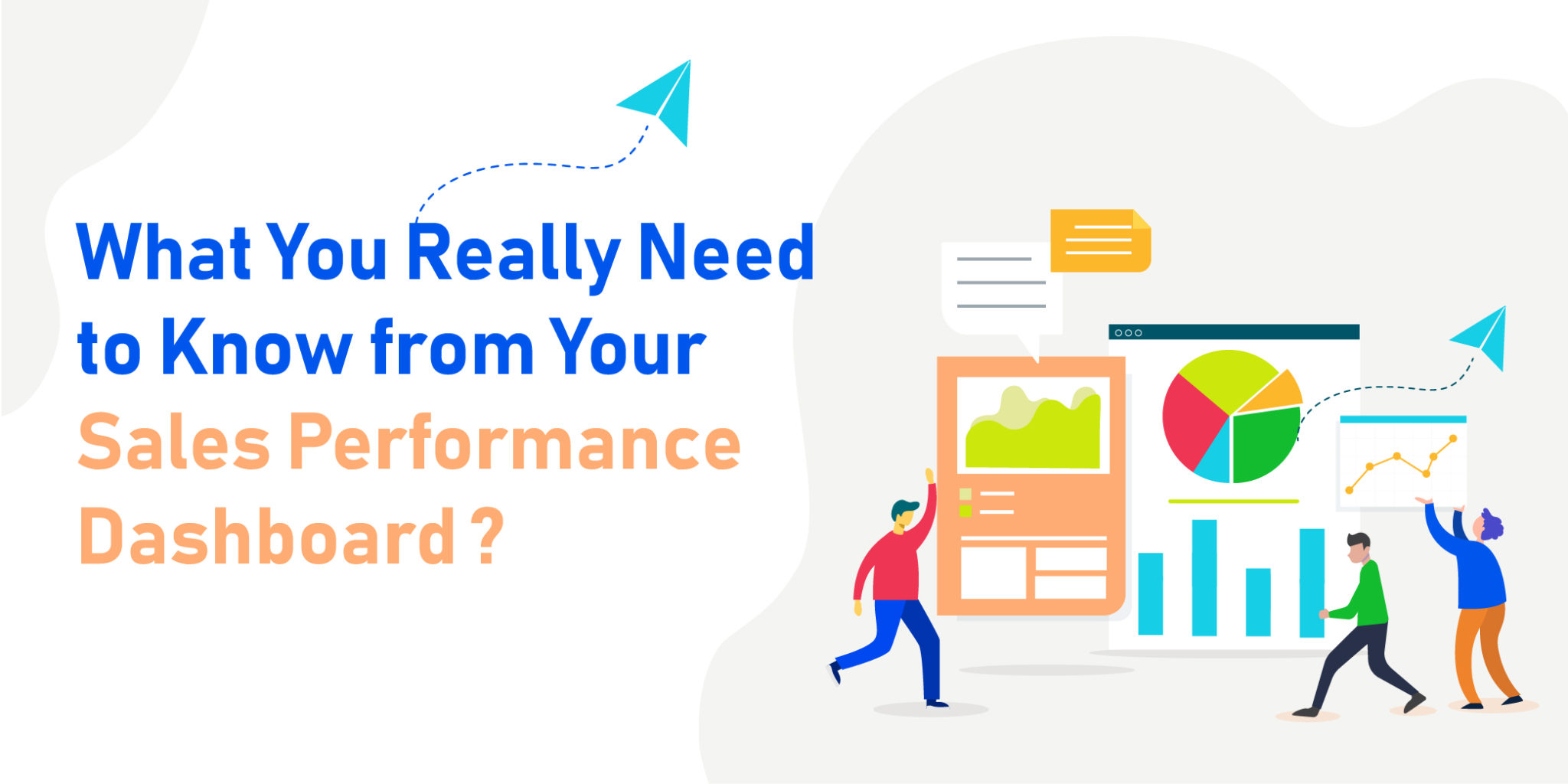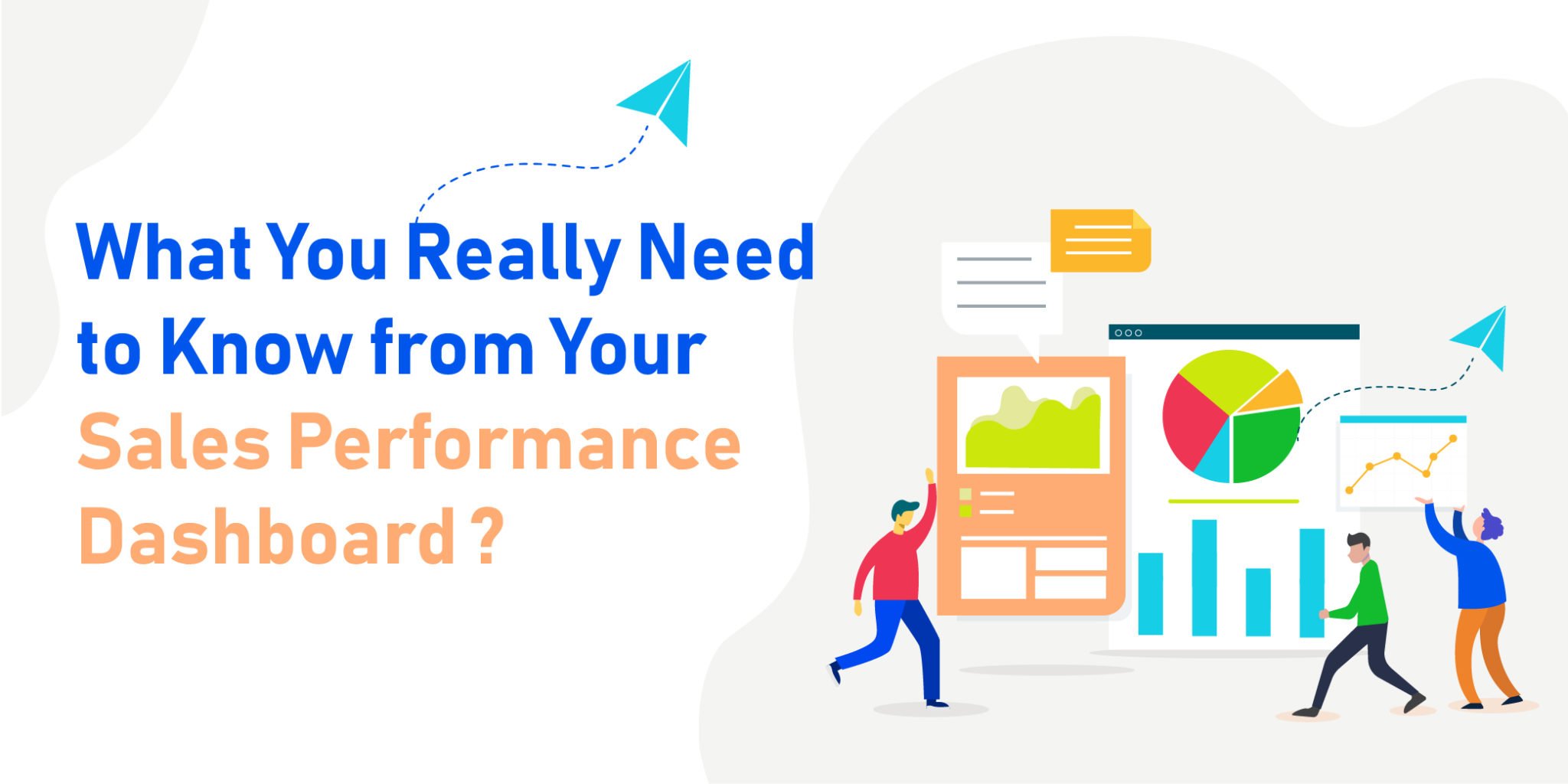No matter what sales software you’re using, you likely have the ability to create custom sales performance dashboards for managers and team members. These dashboards are valuable tools that give you a bird’s eye view of your most important key performance indicators (KPIs). This way, you can see at a glance your entire sales machine as it stands at any given moment so you know how close you are to hitting goals.

Sales dashboards are used by leaders and salespeople alike, and are usually tailored by role. That is, the manager’s dashboard will give insights into the organization as a whole while the salesperson’s dashboard will focus on their own performance.
But regardless of role, there are certain KPIs that should be mainstays on every sales dashboard. Given that clutter creates chaos, you don’t want to overcrowd your dashboard with metrics that won’t bring you closer to your goals or won’t add value to your daily tasks.
Here’s everything your sales performance dashboard really needs to tell you:

1. Revenue Analysis
Money is the driving factor behind any sales organization. It’s essential for sales team members and company leaders alike to know how much revenue is being generated on a daily, weekly, monthly, and year-to-date basis so that business decisions can be made appropriately.
Sales reps can keep tabs on their personal revenue so they can see when they’re hitting goals and how long it takes to reach them. For leaders, they can easily identify their top sales performers based on revenue. They can then determine appropriate actions, such as providing more training or coaching sessions that will motivate underperformers to reach their targets.
2. Sales Performance Snapshot
Revenue only paints part of the sales picture. It’s essential that sales team members know exactly what’s responsible for the revenue they generated, such as the products or services they sold, how many meetings or phone calls they made in a given period, and how many clients they converted.
Ideally, you can break down your revenue analysis into these insights. Knowing what specifically is adding the most to your bottom line can help leaders and sales teams alike know where their best chances are at making sales goals.
3. Visual Leads Funnel
Sales funnels are comprised of several stages, from cold leads in the awareness stage to hot leads that are ready to make a decision. As clients move through these funnel stages, the outlook for your company’s bottom line changes. Those who move further down the funnel increase the likelihood of generating revenue, while those that exit the funnel remove revenue opportunities.
Your sales dashboard should include a visual representation of your sales funnel that updates itself automatically. You’ll know at a glance where your leads are at any given time, as well as the projected revenue they’ll bring.
[Also read: Sales Pipeline Dashboard: How to do it right?]
4. Tasks to Be Completed
One of the biggest benefits of using software like CRM or sales tracking is that tasks have less chance of falling through the cracks. It’s helpful to see at a glance what tasks need to be performed in a given day so that salespeople can stay on top of their workload without the guesswork.
Add a hotlist to your sales performance dashboard so that every salesperson knows what they need to do each day. They can check off tasks as they go, such as making follow up calls or attending meetings, or reschedule tasks that don’t get completed so they don’t fall off the radar.
5. Leads Not Contacted
If you’re using a lead scoring or lead qualification system, it’s easy to forget about leads that don’t rank as high on your priority list. But all leads should be followed up with because every lead holds some potential of turning into revenue.
Knowing which leads have not be contacted yet can be beneficial for both sales leaders and sales team members. For managers, you can generate a report of leads that haven’t been touched to see if your salespeople are cutting corners. And for salespeople, grabbing leads from this list gives you a way to keep your sales funnel full and have more opportunities to sell!
Get Sales Performance Insights with LeadSquared!
Are you missing any of these key ingredients from your sales performance dashboard? LeadSquared can help you fix it! Try LeadSquared free for 15 days to see how you can put the power of metrics to work in your sales flow and start transforming your numbers every day!







